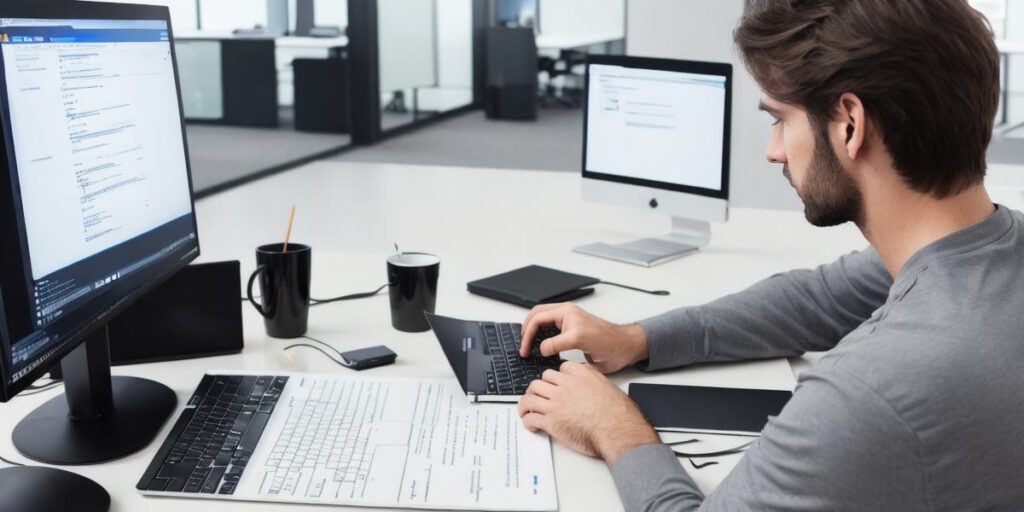Who owns the rights to software

As technology advances, software has become an integral part of our lives. Whether it’s for work or personal use, software is a critical component that allows us to accomplish tasks efficiently. However, there is often confusion about who owns the rights to software and how it affects users and developers. In this article, we will explore the legal implications of software ownership and answer some of the most common questions related to this topic.
What Is Software Ownership?
Software ownership refers to the legal rights that a person or organization holds over a particular piece of software. These rights include the right to use, modify, distribute, and sell the software. The owner of the software has exclusive control over its use and can decide how it will be used or distributed.
Who Owns Software?

The ownership of software depends on various factors, including how it was developed, who funded its development, and how it is licensed. There are three primary models for software ownership:
- Proprietary Software: This type of software is owned by the company that developed it. Users must obtain a license to use proprietary software, and the terms of the license dictate what they can do with the software. Examples of proprietary software include Microsoft Office, Adobe Photoshop, and AutoCAD.
- Open-Source Software: This type of software is developed collaboratively by a community of developers and is released under an open-source license. Users are free to use, modify, and distribute open-source software, but they must adhere to the terms of the license. Examples of open-source software include Linux, Apache, and WordPress.
- Public Domain Software: This type of software is not protected by copyright laws and can be used freely without obtaining a license. Public domain software includes software that is no longer protected by copyright due to its age or because it was released under a license that allows for free use. Examples of public domain software include the GIMP, Blender, and VLC media player.
How Software Ownership Affects Users and Developers
The ownership of software can have significant implications for users and developers. For example, if a user wants to modify proprietary software, they must obtain permission from the owner of the software, which may not always be granted. On the other hand, with open-source software, users are free to modify it and distribute it as they see fit.
In terms of development, proprietary software can limit innovation because developers are restricted in what they can do with the software. They must adhere to the terms of the license, which may not allow them to make changes or improvements that could benefit users. In contrast, open-source software encourages collaboration and innovation because developers can build upon each other’s work and share their code freely.
Case Studies: Software Ownership in Action
Let’s take a look at some real-life examples of software ownership to see how it affects users and developers.
- Microsoft Office: Microsoft Office is a proprietary software suite that is owned by Microsoft Corporation. Users must obtain a license to use Microsoft Office, which restricts what they can do with the software. For example, users cannot modify the code or distribute it freely without obtaining permission from Microsoft. This has led to criticism from some users who believe that Microsoft’s restrictions limit innovation and creativity.
- Linux: Linux is an open-source operating system that is developed collaboratively by a community of developers. Users are free to use, modify, and distribute Linux without obtaining a license. This has led to widespread adoption of Linux in servers, supercomputers, and other systems because users can customize it to their needs and share it freely with others.

- Spotify: Spotify is a music streaming service that uses proprietary software to provide its services. Users must obtain a subscription to use Spotify, which limits what they can do with the software. For example, they cannot modify the code or distribute it freely without obtaining permission from Spotify. This has led to criticism from some users who believe that Spotify’s restrictions limit innovation and creativity.
The Future of Software Ownership
As technology continues to evolve, it is likely that software ownership will continue to change. For example, the rise of blockchain technology may make it easier for developers to create decentralized applications that are not controlled by a single entity. This could lead to a shift away from proprietary and open-source models towards more democratic forms of software ownership.
Conclusion
Software ownership is a complex topic with significant implications for users and developers. By understanding the different models of software ownership, we can better appreciate how software affects our lives and make informed decisions about how to use it. Whether you are a user or a developer, it’s important to stay informed about the legal and ethical aspects of software ownership so that you can use software in a way that is both responsible and beneficial.